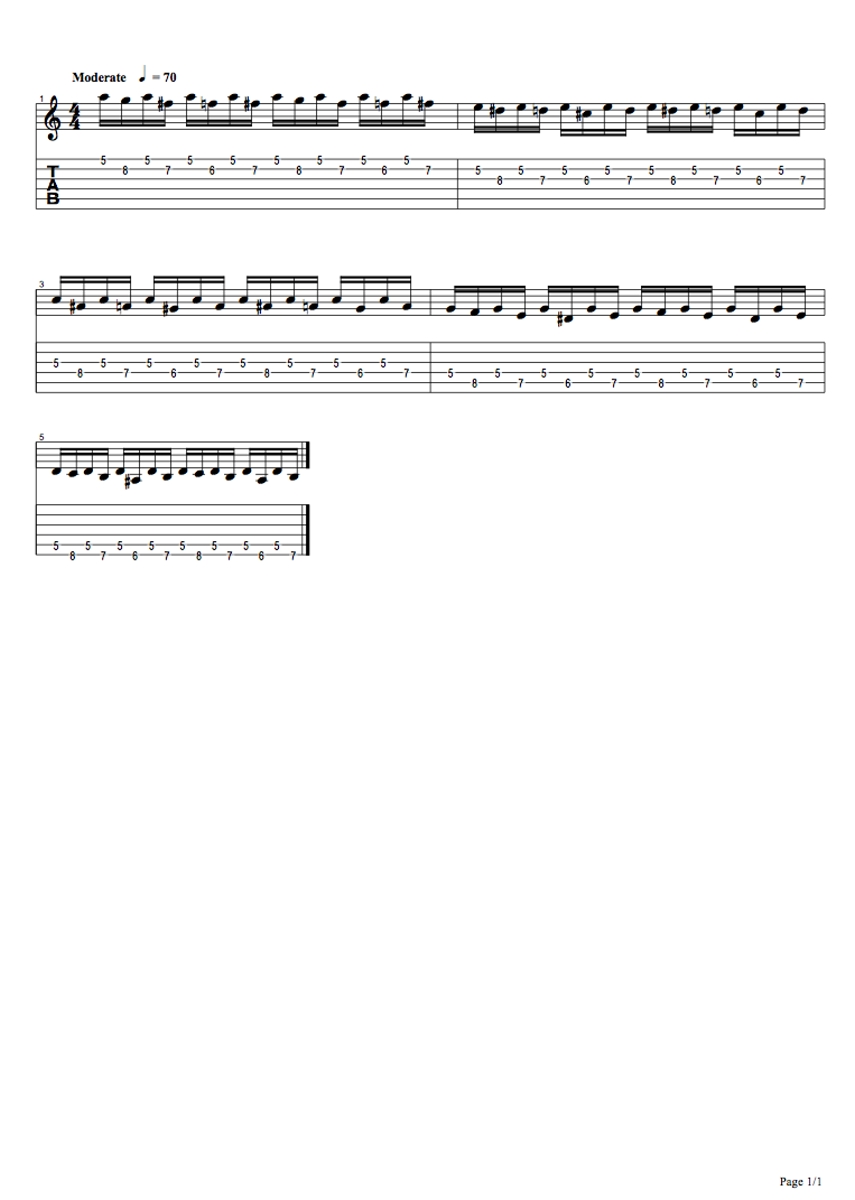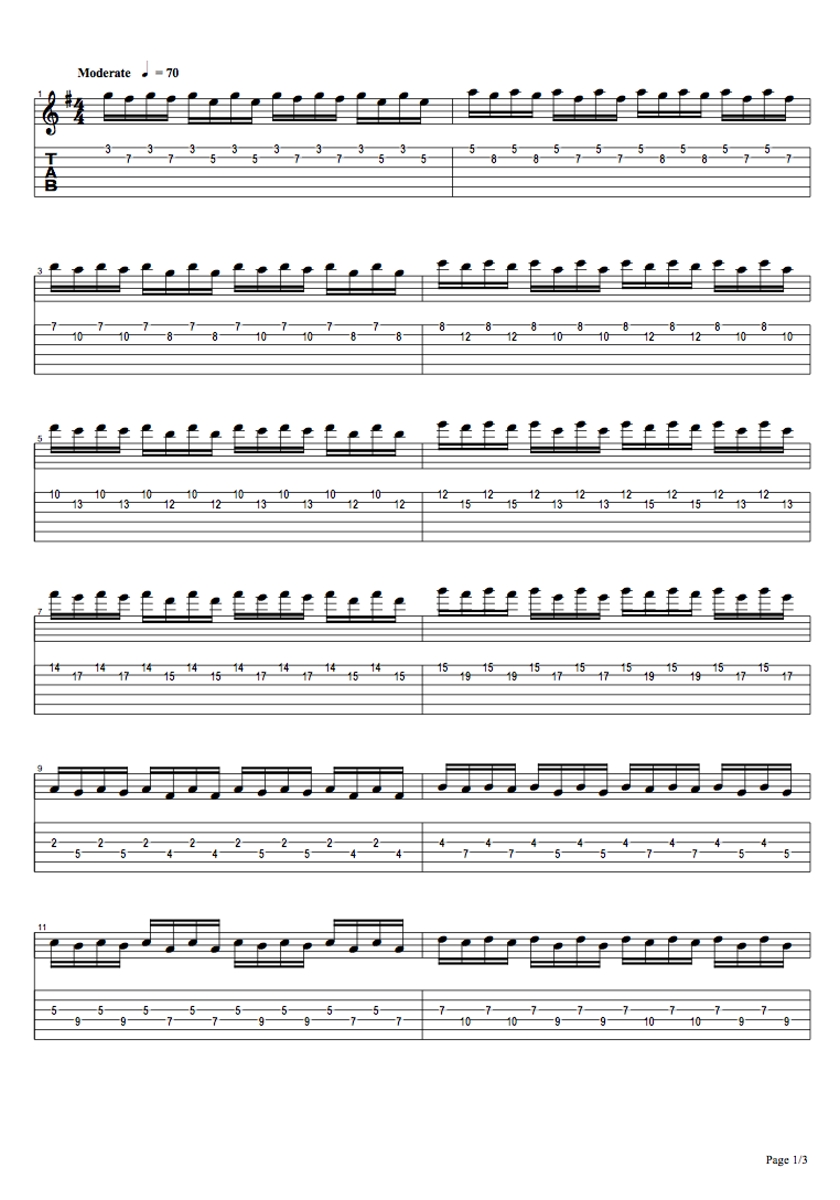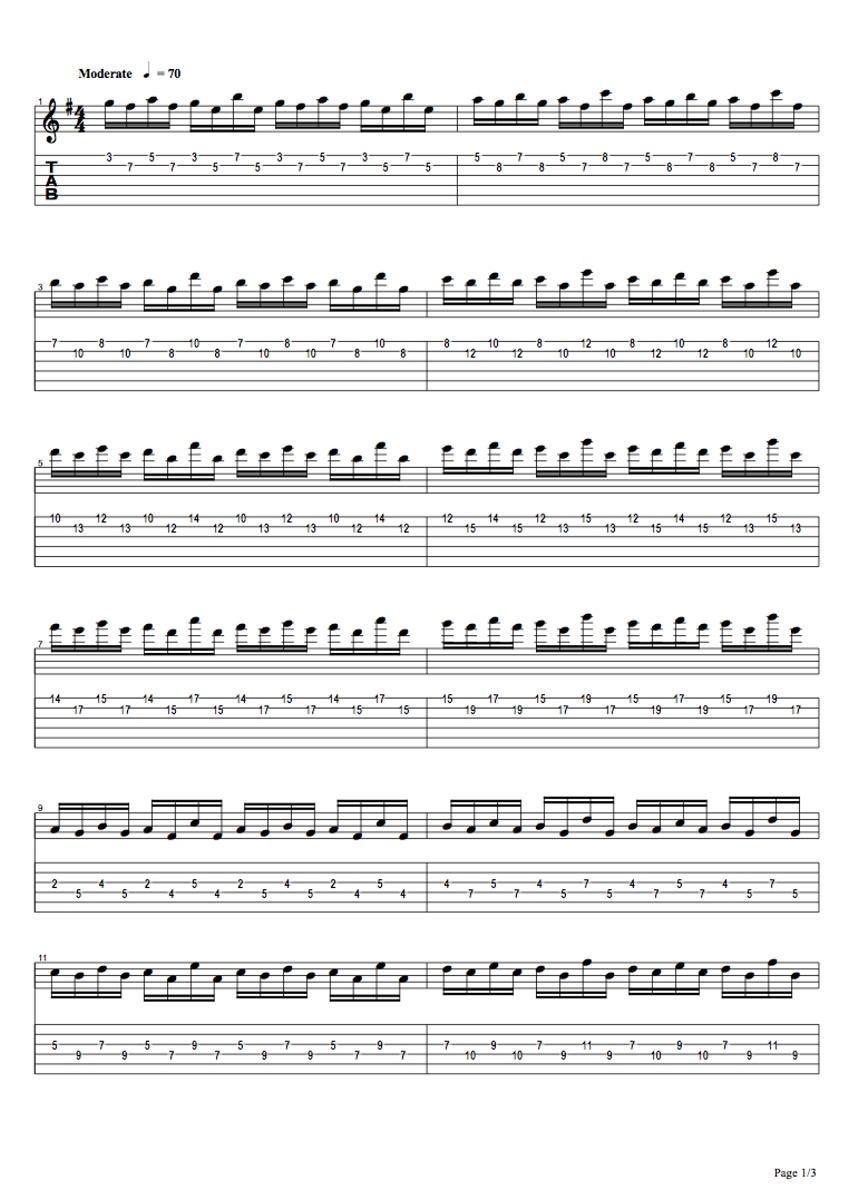String crossing is critical in lead guitar playing, and requires some specific exercises to be mastered. These exercises will help you to focus on string crossing with alternate picking, and also to help you develop left/right hand synchronization, speed and stamina.
When we have a problem with our guitar playing the best thing we can do is to focus on that problem and isolate the specific movement or mechanics that need to be improved to solve it.
How can we do that? The answer is: create some exercises and/or etudes which focus on that particular movement or mechanics. This is essential to leverage our practice time and get the best possible results in the shortest possible time.
So, these three exercises are tailor made to get rid of string crossing problems which may occur in the execution of lead guitar parts. By practicing these exercises daily you will surely notice a massive improvement in your left/right hand syncronization, which is a basic condition to build speed and stamina and avoid sloppy playing.
Remember to use a metronome and play four notes per beat. Start slowly (I wrote 70 bpm on the files, but you can start even slower if you think it's necessary) and then gradually increase the tempo during the days, weeks, months and years.
Note: You should use only "alternate picking" and practice all three exercises first by starting with an upstroke (up-down-up-down, etc.) and then by starting with a downstroke (down-up-down-up). This will ensure that you focus both on "outside picking" and "inside picking" (if you don't know the meaning of these expressions, please don't hesitate to get in touch).



Exercise #1: This is a purely mechanical exercise, without any relevant musical meaning. It gives our brain the chance to focus only on the movement we want to work on, without thinking about a particular scale or some theory concepts. I wrote it starting on the fifth fret as an example, but you should move it through all the frets on the guitar.
Exercise #2: I gave exercises #2 and #3 musical meaning by isolating some string crossing movements/patterns and developing them diatonically on a scale (the E natural minor scale, in my case.)
As you can see, the idea develops on all the combinations of strings, except for the second and third, because the fingerings on this set would include some rolls (I have some other specific exercises to work on finger rolls on guitar).
Exercise #3: This exercise is basically an etude based on string crossing and it's also in the key of E minor. It also includes some triad fingerings ("1+2" fingerings, in the fundamental position. It means: root on the upper string and then 3rd and 5th on the lower string).
Once you'll master exercises #2 and #3, you should transpose them to all the other keys.
Please feel free to send me a message via email. If you have any kind of doubts or problems, I would be happy to reply! I can't wait to hear about your progress! May God help us in our daily practice.
Luca Sellitto is a professional guitar instructor who has been teaching guitar for nearly 14 years.
He has two degrees at Conservatory, and has also recorded four albums, toured Europe with his band Stamina, and worked with ex-Yngwie Malmsteens singer Goran Edman.